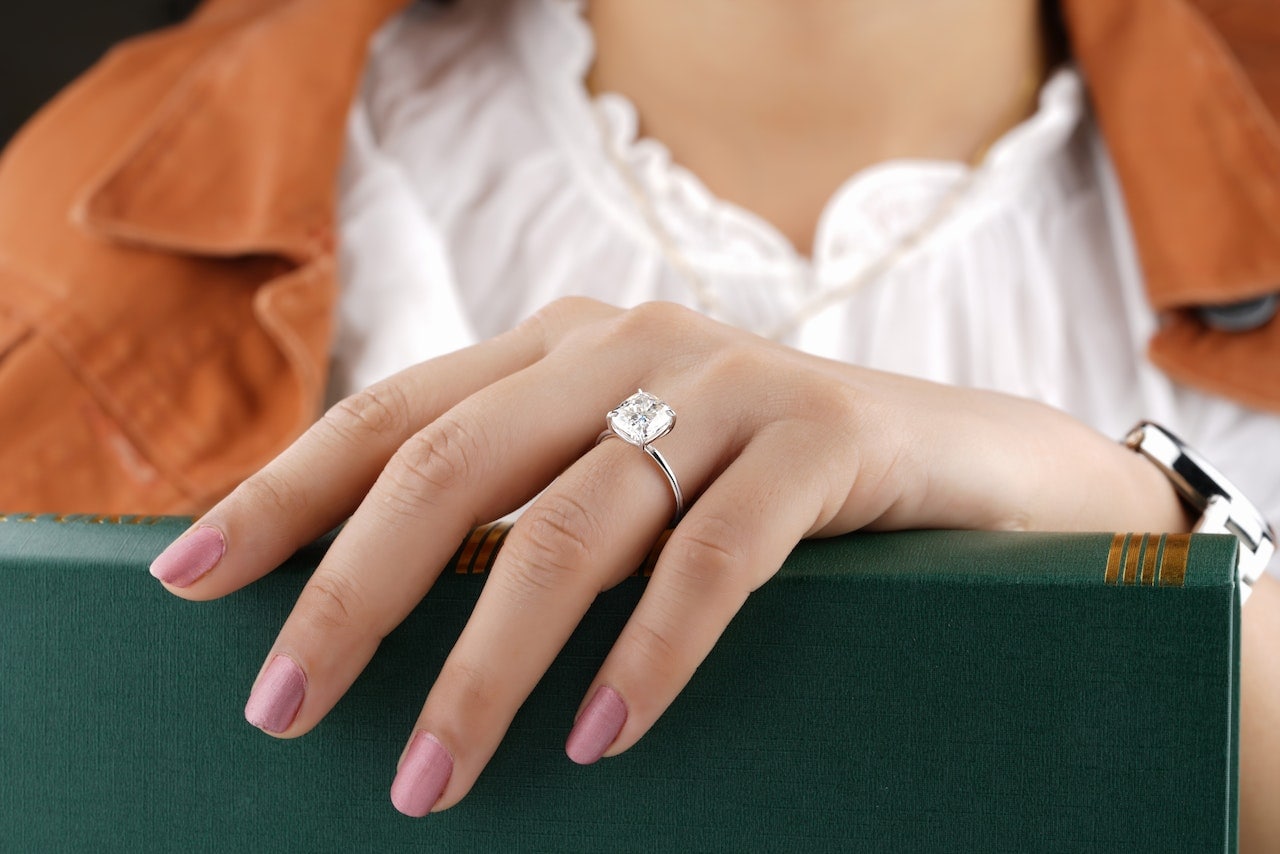
Table of Contents
The diamond industry is a world of many wonders as well as lots of misconceptions. When quizzed, for example, most people would say that diamonds have been mined, cut, and worn on jewelry for thousands of years. Yet, that’s only partly true.
In reality, diamond cutting is an incredibly new practice that hasn’t been done for the majority of the time people have been mining and wearing diamonds.
So, what does this mean, exactly? Did people just wear uncut diamonds? Also, when and how did we start cutting diamonds?
When were some of today’s more popular diamond cuts developed? Let’s find out by going over a brief history of every diamond cut below.
Why Were Diamonds Uncut For Nearly Two Thousand Years?
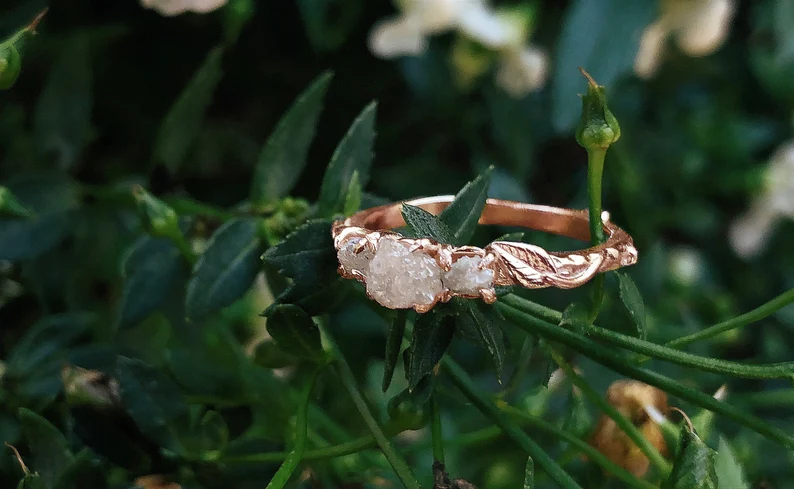
Diamonds have been known in the old world for thousands of years – primarily in India, the Middle East, and through them, occasionally, in Europe. For most of that time, however, they were exclusively mined in India and weren’t found anywhere else in the world.
It was only after the start of Europe’s age of colonization that diamonds were found in Africa and South America too.
Before that, Europe’s only source of diamonds was from India and through the Middle Eastern trading routes. Even that limited supply of diamonds was mostly inactive during the Middle Ages.
So, even though diamonds have been mined in India for about 2,500 years, they only made their way from India to Europe for a while during the time of the Roman Empire. Once the crusades forcefully opened up more trading routes in the 14th century, they traveled through Venice.
Diamonds Were Hard to Cut
However, diamonds were not just rare and hard to come by, but also extremely hard. Jewelry craftsmen would polish diamonds or grind them into diamond dust and then cut other gemstones with the help of metals and diamond dust. But they weren’t really able to cut the diamonds themselves.
What’s more, most craftsmen didn’t even attempt to cut diamonds for a very long time because they didn’t need to.
The reason for that was simple – while diamonds were extremely scarce and expensive in Europe, they were bountiful in India.
Born Out of Necessity
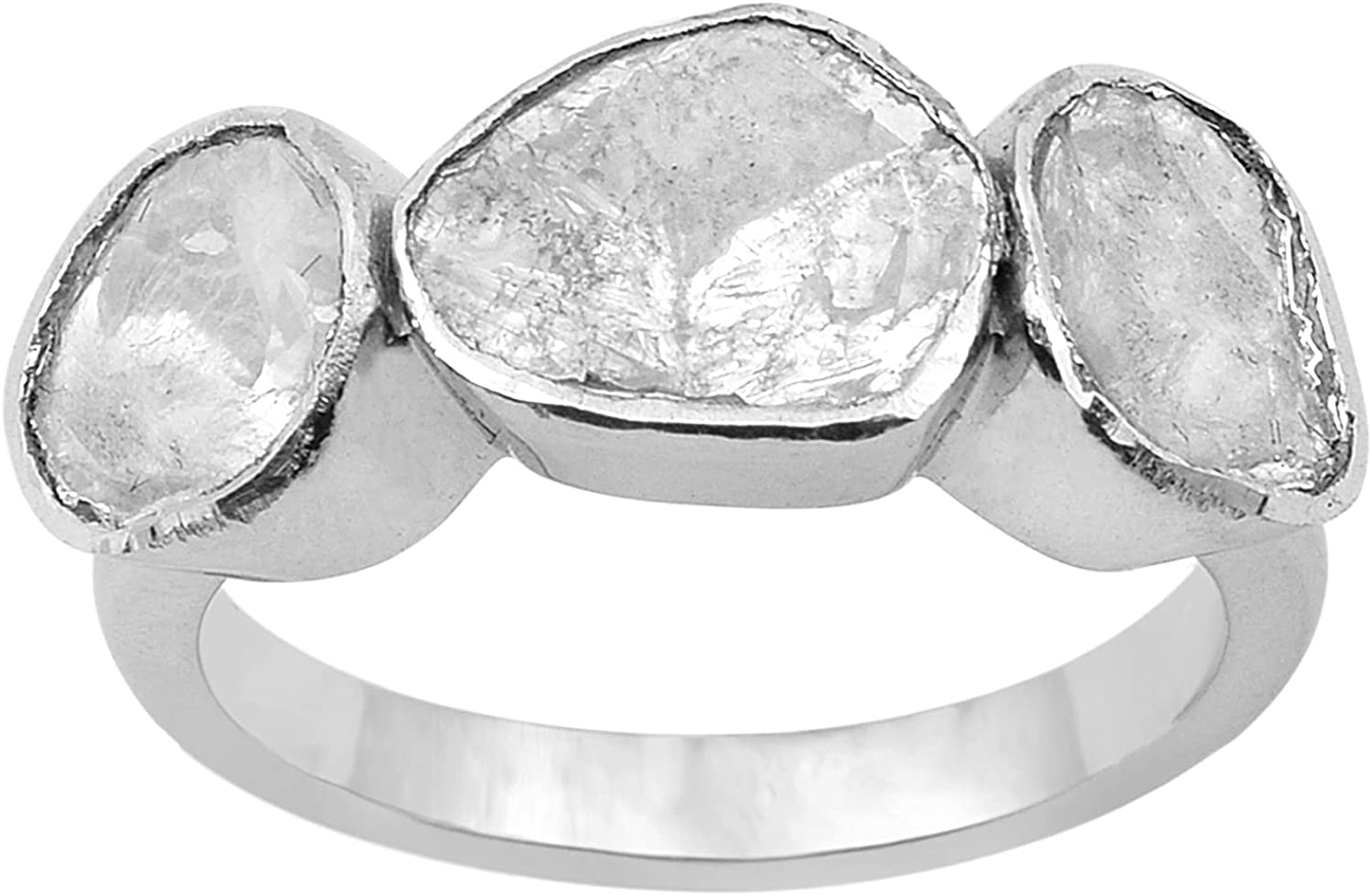
This meant that people in India were able to keep most of the largest and most gorgeous diamonds for themselves and had a sizable supply of diamonds that looked great even uncut.
In fact, the prevailing view in India was that even just trying to cut a diamond was tantamount to sacrilege as that meant removing and destroying parts of the stone.
The diamonds that were exported to the Middle East and Europe, on the other hand, were smaller and of a lower quality, which gave the craftsmen in those parts of the world much more of an incentive to try and somehow cut them to enhance their looks and brilliance. And this is what led to the first diamond cuts, as late as the 13th and 14th centuries AD.
The History Of Every Diamond Cut
To be precise, it’s not 100% clear when the first diamond cuts were successfully done. Many jewelry historians speculate that the oldest found examples of cut diamond stones come from the 13th-century Islamic world in the Middle East.
Others claim that early 14th-century Venice was the birthplace of diamond cutting and the practice trickled back to the Middle East from there.
Whatever the case, both Venice and the Middle East were the driving forces of diamond cutting throughout the following few centuries. From there, the practice started spreading to other parts of Europe and the rest of the world.
From that point on, we have a relatively clear picture of which cuts were pioneered where, when, and by whom. So, let’s go over many of the most famous diamond cuts and their characteristics and histories:
1. The Point Cut
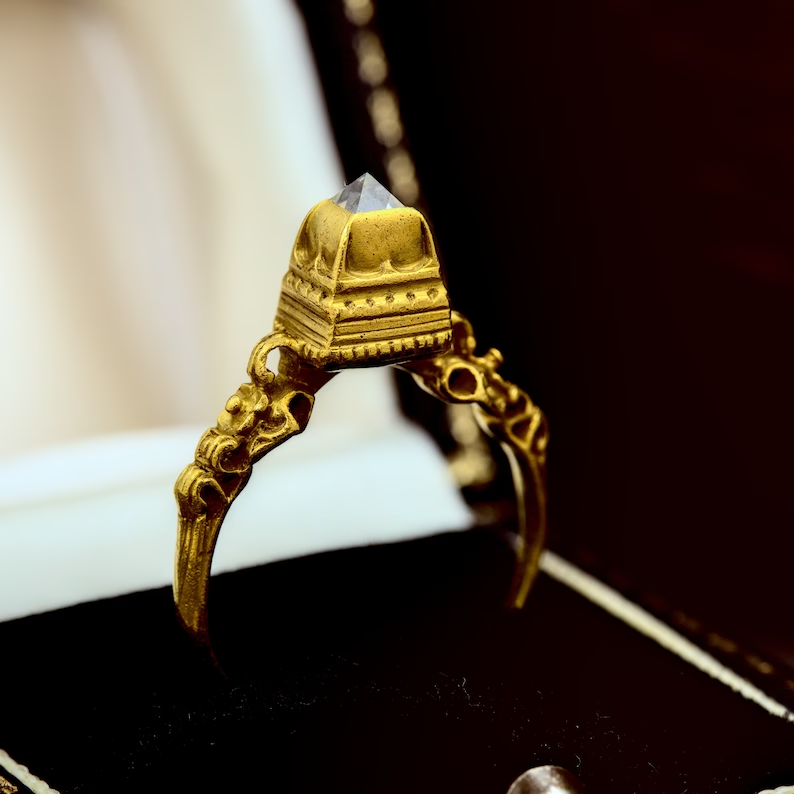
This is both the simplest and probably the earliest diamond cut humanity has come up with. The cut produces a 6-pointed octahedron shape that looks like two pyramids stuck together.
Compared to modern-day brilliant cuts, the Point cut doesn’t offer the same brilliance. But it was the first actual shape the Medieval jewelers were able to cut diamonds into other than just polishing them.
2. The Table Cut and the Old Single Cut
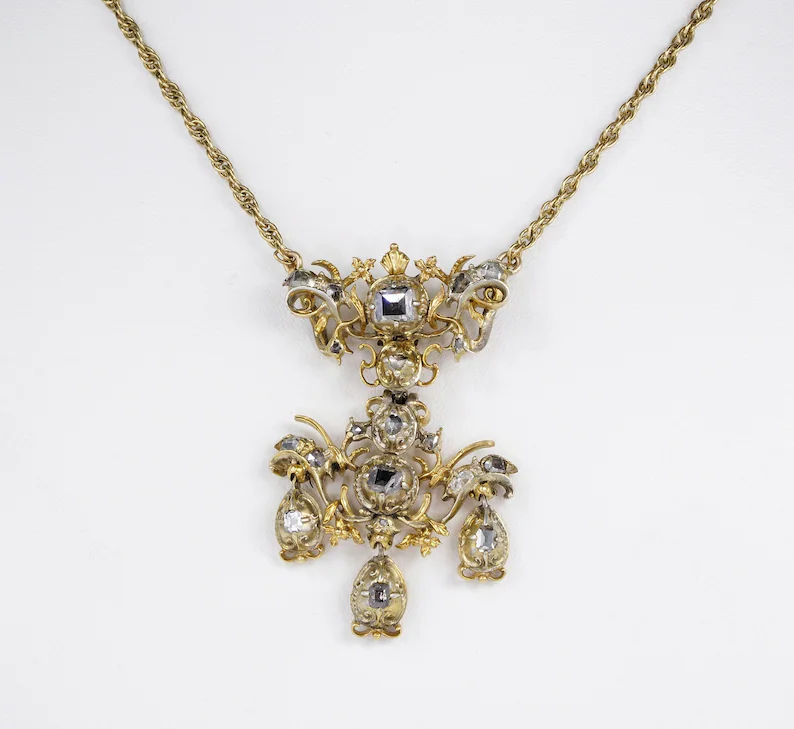
Table cuts are a simple derivative of the Point cut. Diamonds of both types have been found as early as the 13th century.
Simply put, the Table cut is made when you saw off the top point of the Point cut octahedron, creating a small table instead of a point at the top.
As with the Point cut, the individual responsible for the Table cut’s creation isn’t known to history, but it’s likely that both cuts were created either by Middle Eastern or Venician jewelers.
Additionally, both cuts were widely used for centuries in all types of jewelry before more intricate and higher-brilliance cuts became achievable.
As for the Old Single cut, it’s a derivative of the Table cut and was created soon after its predecessor. It looks the same but its four side edges are cut into facets to enhance its light reflection.
3. The Rose Cut
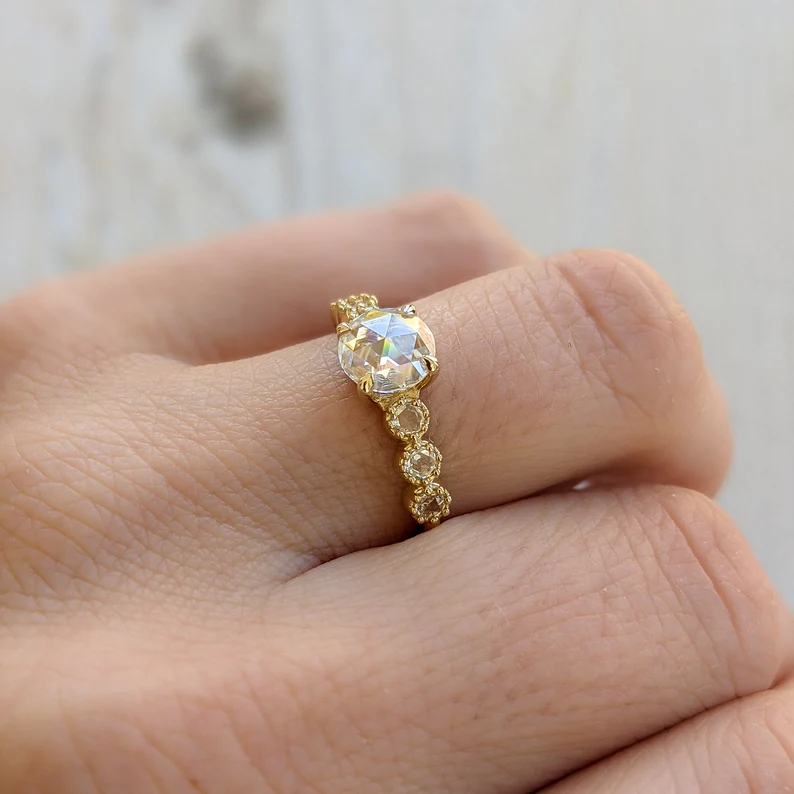
One of the big innovations in the diamond industry came in the 16th century when better cutting technology allowed for more intricate cutting and faceting.
Enter the Rose cut.
With a flat button-like shape, the Rose cut impressed with its many intricate facets cut on the top that was previously impossible to make.
In fact, around that time, the old Table and Single cuts also started being made with extra facets on their crowns and pavilions.
4. The Pendeloque Cut
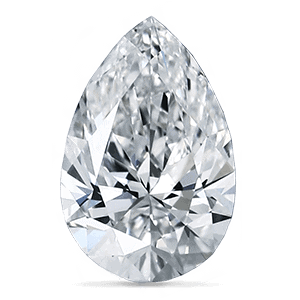
A rarely-discussed cut, the Pendeloque is the original version of the modern brilliant pear cut, and it was developed as early as the 15th century by Louis de Berquem.
It wasn’t nearly as complex or brilliant as modern-day Pear cuts, of course, as those were developed and perfected in the 20th and 21st centuries.
The Pendeloque was cut and worn widely during the 15th century and onward, however, primarily for pendants and earrings.
As older cuts started being improved upon, the Single cut started evolving into more complex forms. Enter the Mazarin cut, i.e. the Double-cut Brilliant. The Mazarin had 17 facets on its crown – a low number by today’s standards but a huge improvement for its time.
Naturally, innovation didn’t end there.
6. Old Mine Cut
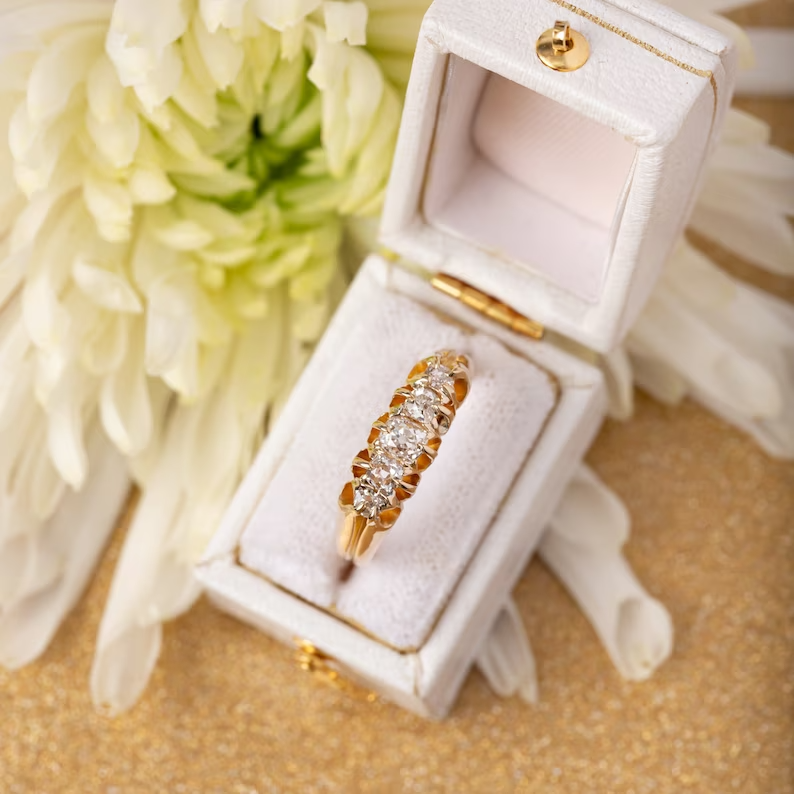
You may have heard about the Old Mine Cut. If the Mazarin was a Double cut, the Old Mine was essentially a Triple cut. And this difference is significant because the extra round of cuts meant that the total number of facets on the gem jumped to 58.
That’s the same as most modern Brilliant cuts, albeit in a rougher and still mostly rectangular (if a bit roundish) shape – a higher crown, a smaller table, and larger facets.
The Old Mine cut became popular in the 17th century as it was developed and perfected in the newly founded Brazilian and African mines (hence the name).
Although archaic versions of it can be traced back to the 14th century, the Old Mine cut is seen as a 17th-century invention.
7. Peruzzi Cut
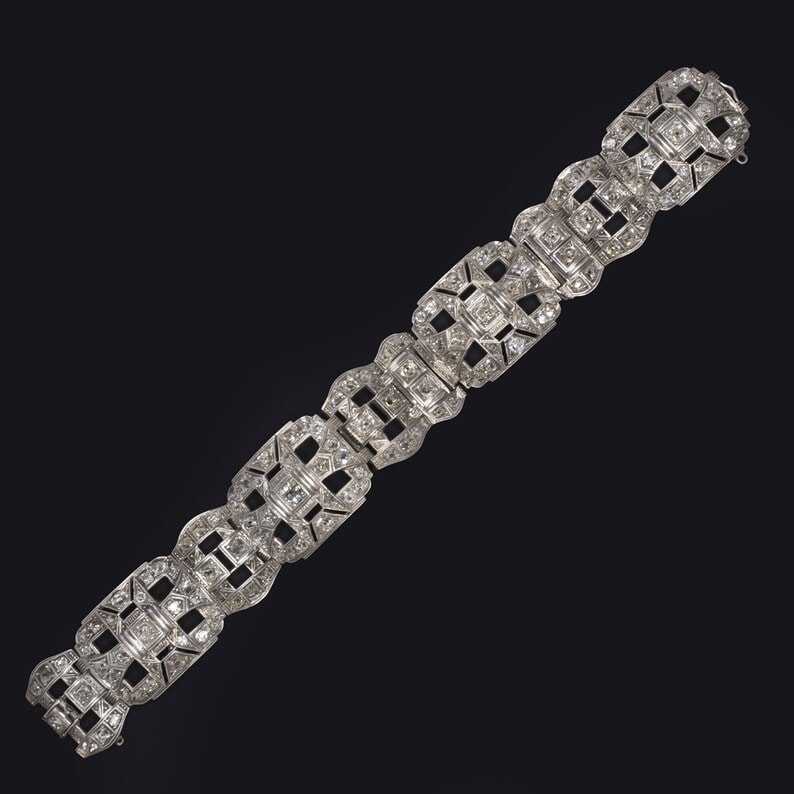
What came soon after it, however, was the Peruzzi cut. Developed by Vincenzo Peruzzi in Venice, also during the 17th century, the Peruzzi cut is basically a perfected and more refined version of the Old Mine cut.
8. French Cut
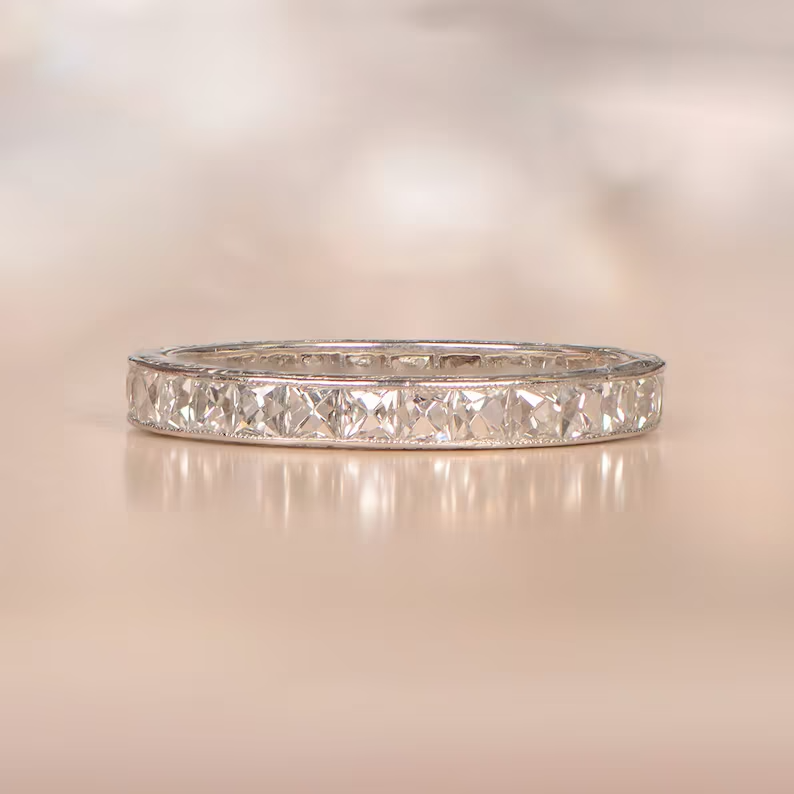
The French cut also ought to be mentioned here. Its origins can be traced back to 15th-century France but this cut was refined and popularized during the 17th century.
This cut also has a rectangular shape with a high crown and triangular facets cut in a criss-cross pattern.
The French cut was used on centerpiece ring stones but nowadays it’s predominantly used for smaller stones arranged in paving or other similar settings.
6. The Baguette Cut
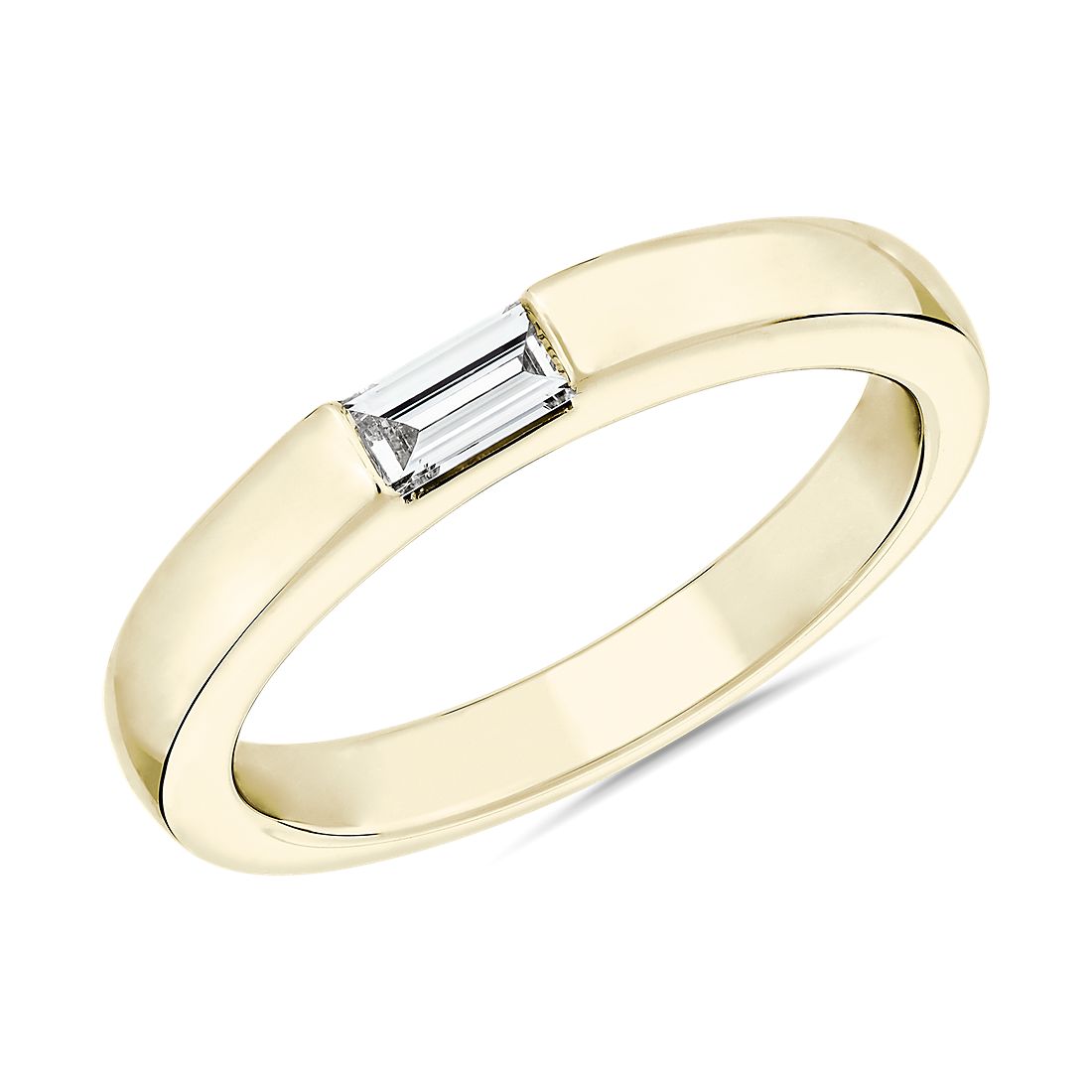
The origins of the Baguette cut can also be traced back to the 16th century. Those original baguettes were also rectangular and elongated but their quality wasn’t as refined as we’ve come to expect today.
They were widely used as supplementary stones as they were good for forming numbers and letters on larger jewelry pieces.
The original Baguette cut was eventually refined, re-introduced, and re-popularized in the early 20th century.
7. The Mughal Cut
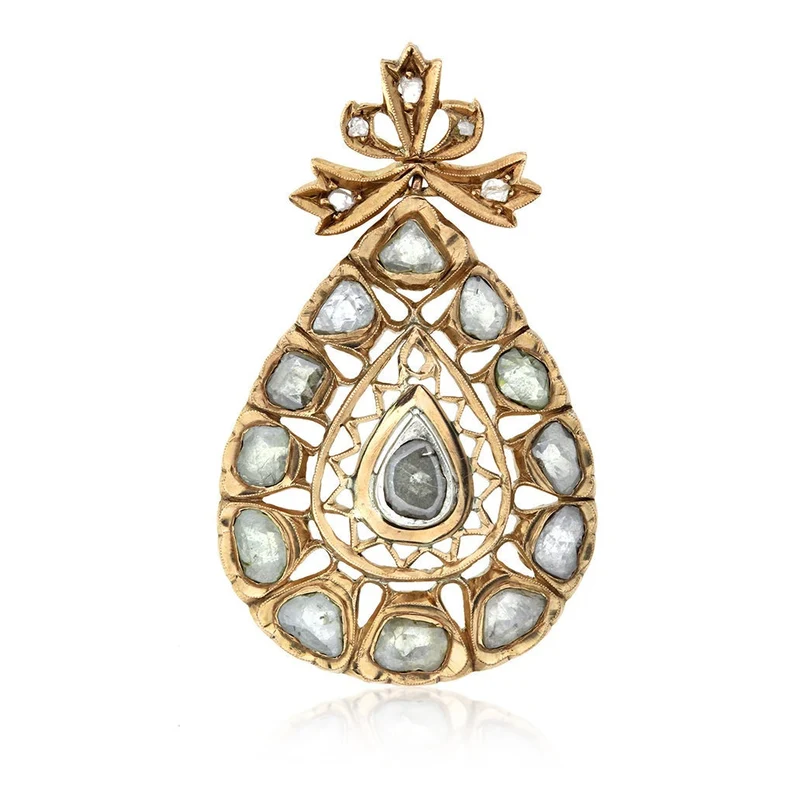
The Mughal cut is unique to all others on our list as it isn’t an actual cut. It’s the practice of cutting diamonds along their natural shape to minimize the number of diamonds that are being removed and maximize the size of the finished stone.
The practice is named after the Mughal dynasty in India, which oversaw one of the Golden Ages in the country, particularly regarding diamond jewelry.
This means that you can find Mughal-cut diamonds in various uneven shapes. Of course, their brilliance won’t be the same as that of Western brilliant cuts, but Mughal-cut stones still look awesome, are larger on average, and are more “natural” in a sense.
8. The Transition Cut
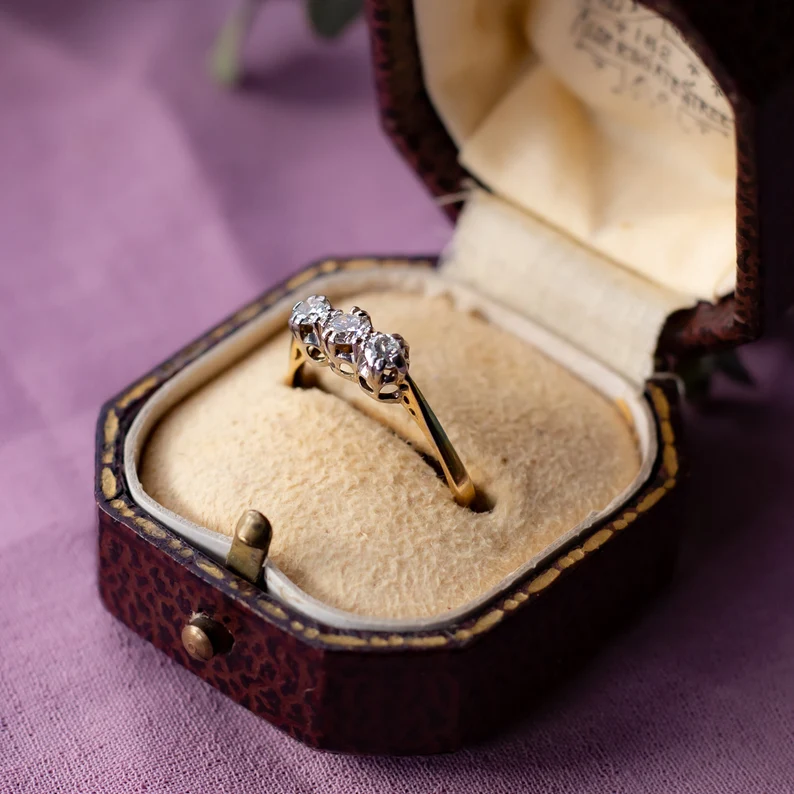
The Transition cut is when jewelers started developing their skills beyond the rectangular shape of previous cuts and onto the rounder shape of Brilliant cuts today. In fact, that didn’t happen until the 19th and start of the 20th century.
While the Old Mine cut also had a rounder shape than most of its contemporaries, all of them generally fell in the “Step cut” category – more or less rectangular cuts that are faceted in a step-like fashion.
You may also encounter terms such as Swiss cut and Old European cut – these can also be seen as “transitional cuts” or as variations of the Transition cut developed in the 19th century.
9. The Brilliant Cuts
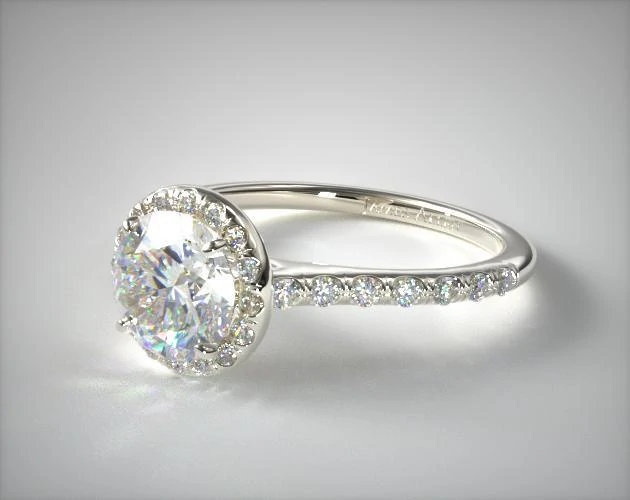
The first “Brilliant cuts” were technically developed in the 17th century. They weren’t what we today understand as a Brilliant cut, however. They were rough, rarely properly round, and with not nearly as much brilliance as today’s Brilliant cuts.
What classified them as “Brilliant cuts” was simply the design direction of putting more of the stone’s overall volume and weight in the pavilion, i.e., the lower part of the stone.
Modern-day Brilliant cuts began to be perfected in the 20th and 21st centuries. They are the most popular diamond cuts today, with the round brilliant diamond cut being the most popular. Of course, there are other Brilliant cut shapes, such as the Pear, Oval, Cushion cut, and others.
10. The Asscher, Princess, Emerald, and other modern Step Cuts
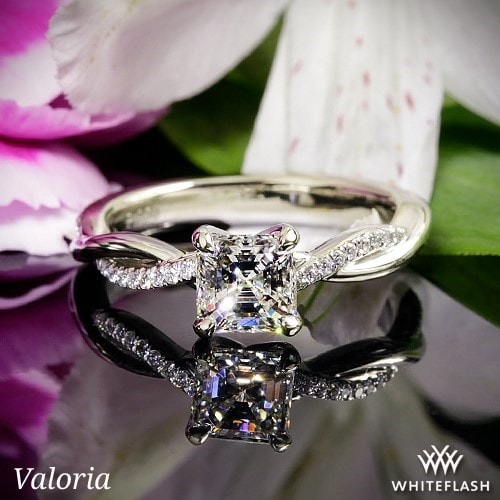
The rise of the Brilliant cuts didn’t stop the progression of Step cuts. The 20th and 21st centuries saw the invention of various other popular Step cuts, such as the Asscher, Princess, and Emerald.
To this day, even the most beautiful Step cuts don’t offer the same brilliance as a Brilliant cut, but that’s inevitable. Their strength, instead, lies in the larger surface area compared to Brilliants of the same carat weight, as well as the more elegant shape and look.
Wrapping Up
As you can see, diamond cutting is a pretty recent phenomenon, all things considered. Not only were the earlier days of the practice less than a millennium ago but most of the common diamond cuts we see in jewelry stores today were invented as recently as the 20th and 21st centuries.
This doesn’t take away from the awesomeness of diamond jewelry, however, nor does it diminish diamonds’ history – to the contrary.
Humanity has known of, mined, polished, collected, worn, and even worshipped diamonds for two and a half millennia – cutting these gorgeous stones is just the most recent way we’ve found to make them look even better.









